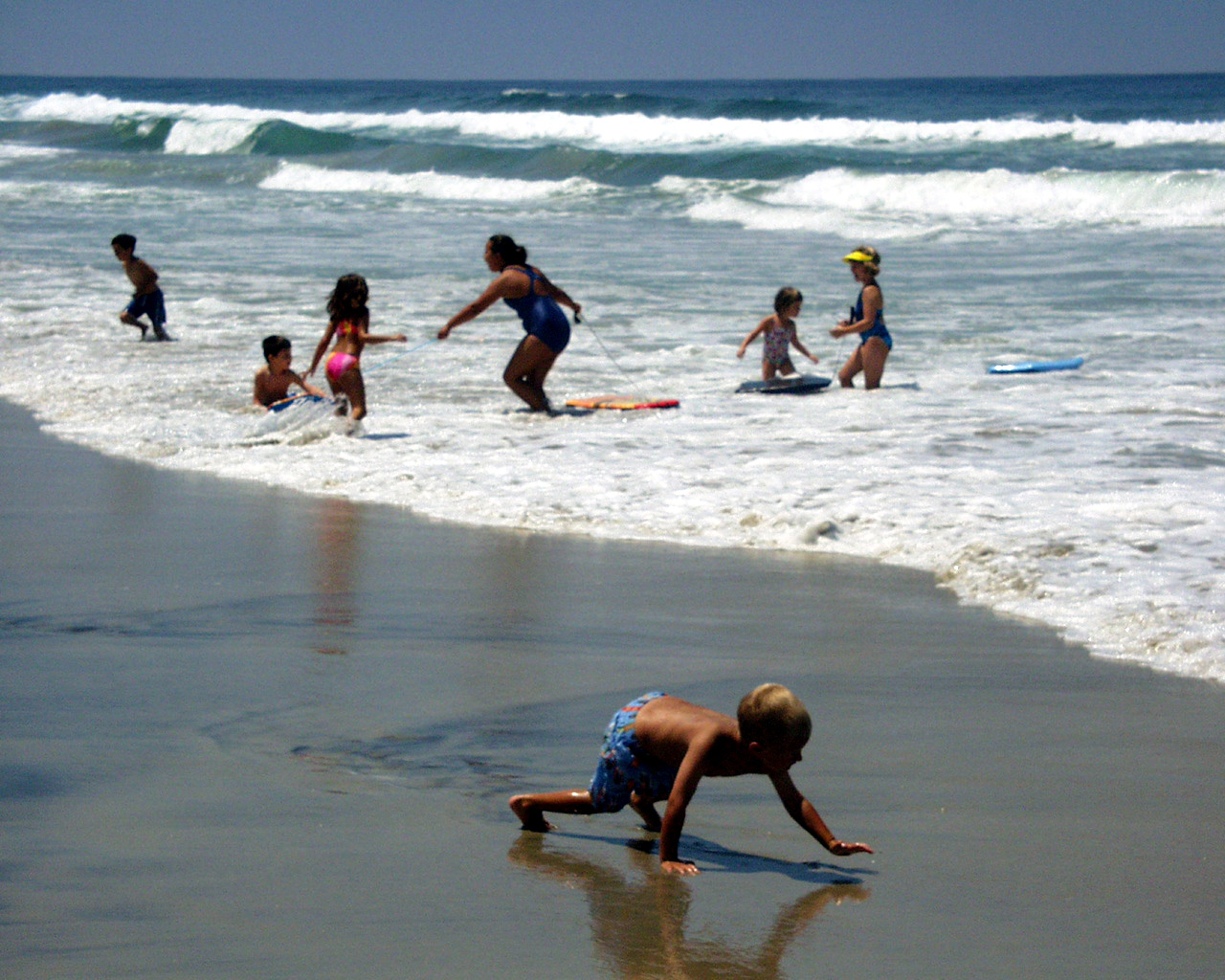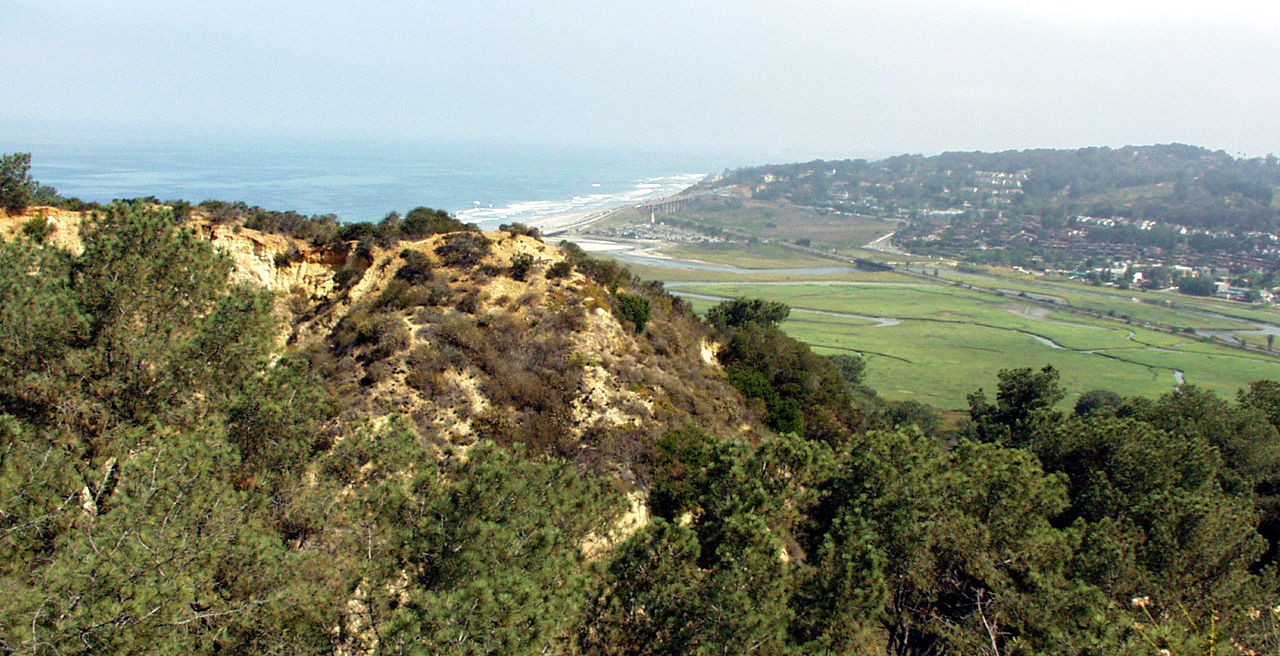
Overview—From behind the Visitors Center at Torrey Pines
State Reserve, this panorama unfolds. Bluffs in the foreground are the home of
the Torrey Pines, a unique species for which the park is named.
Coastline below
includes Torrey Pines State Beach, part of the reserve. Flat green area
is Los Penasquitos Marsh Natural Reserve.
The park is just north of the Torrey Pines Golf Course, famous for its
Master's Tournament play.
By Donald H. Harrison
LA JOLLA, Calif.—In our self-deprecatory humor, we Jews like to joke,
"two Jews, three opinions," in recognition of what might be our
Talmudic penchant for debating, refining, distinguishing, differentiating,
clarifying, expanding or expounding upon a point. But if you should ever
happen to spend some time in the visitors center of Torrey Pines State
Reserve, you can find proof-positive documentation that two Jews can
occasionally agree—even two Jews who were elected to the state Assembly from
neighboring districts in San Diego County.

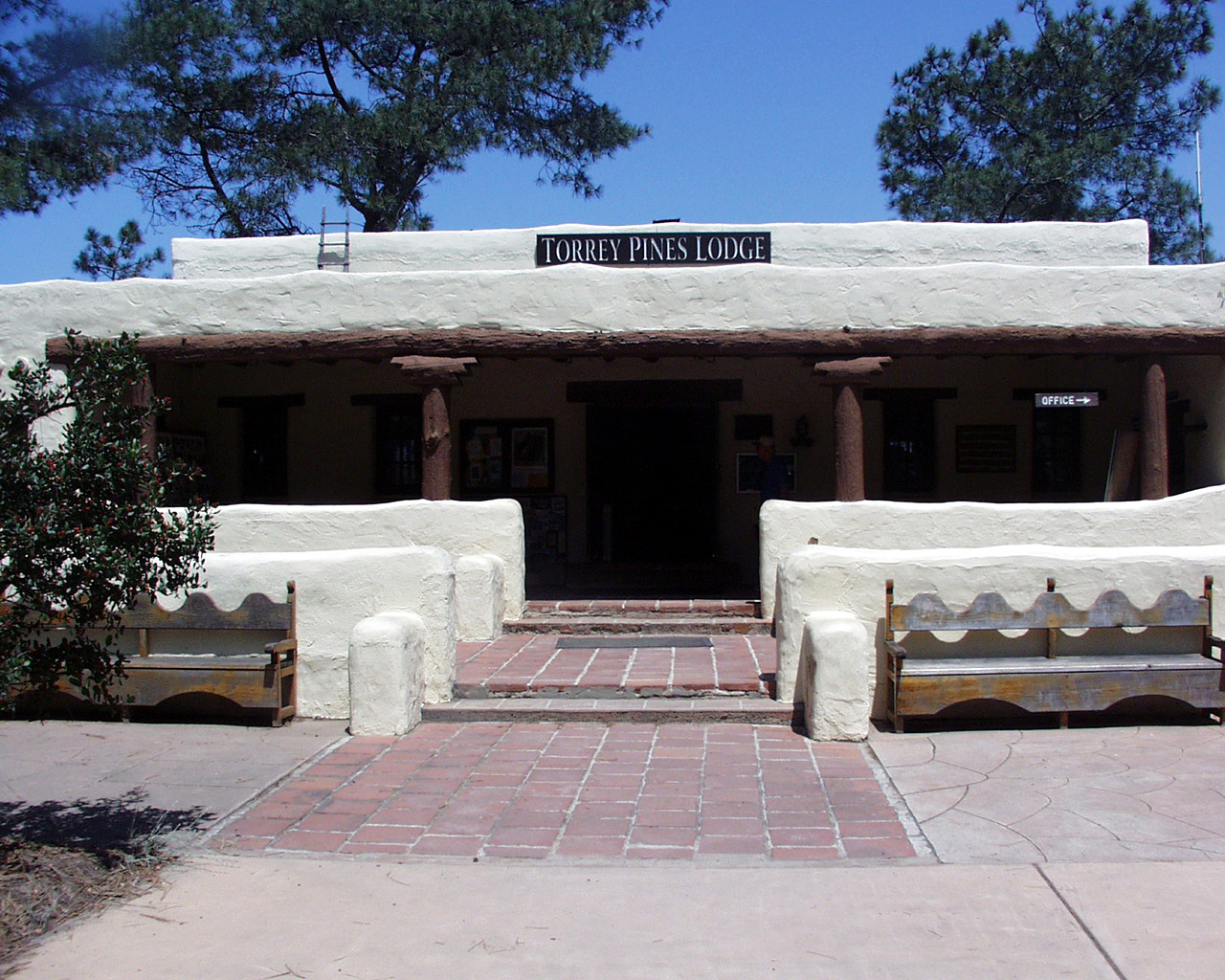 On
display along with photographs of botanists Charles C. Parry and John Torrey,
and in addition to stuffed examples of mammals
On
display along with photographs of botanists Charles C. Parry and John Torrey,
and in addition to stuffed examples of mammals
Resolution and Visitors Center—Their views almost as
perfectly symmetrical as the Torrey Pines Lodge,
which serves as a visitors center, Assembly members Susan A. Davis and Howard
Wayne agreed in 1999 that
the Torrey Pines State Reserve was a place of rare beauty, worthy of
preservation. (Click resolution to enlarge)
and birds which may be encountered in the 2,000-acre state reserve, is an
October 9, 1999, resolution by State Assembly Members Susan
Davis and Howard
Wayne congratulating a number of local organizations in connection
with the celebration that year of the 100th anniversary of the reserve being
named a city park.
In the following year, Davis went on to be elected as a member of Congress.
Wayne continued in the Legislature, eventually reaching the three-term limit
for service in that body and returning to a position in San Diego as an
assistant state attorney general. The two colleagues, both Jewish
Democrats, noted in their joint resolution that the park, was "possibly
the oldest region in the nation set aside as a wilderness preserve" and
that its namesake Torrey Pine is a species found only on these bluffs on
the northern coastal edge of La Jolla and, curiously, on Santa Rosa
Island off the California coast near Santa Barbara.
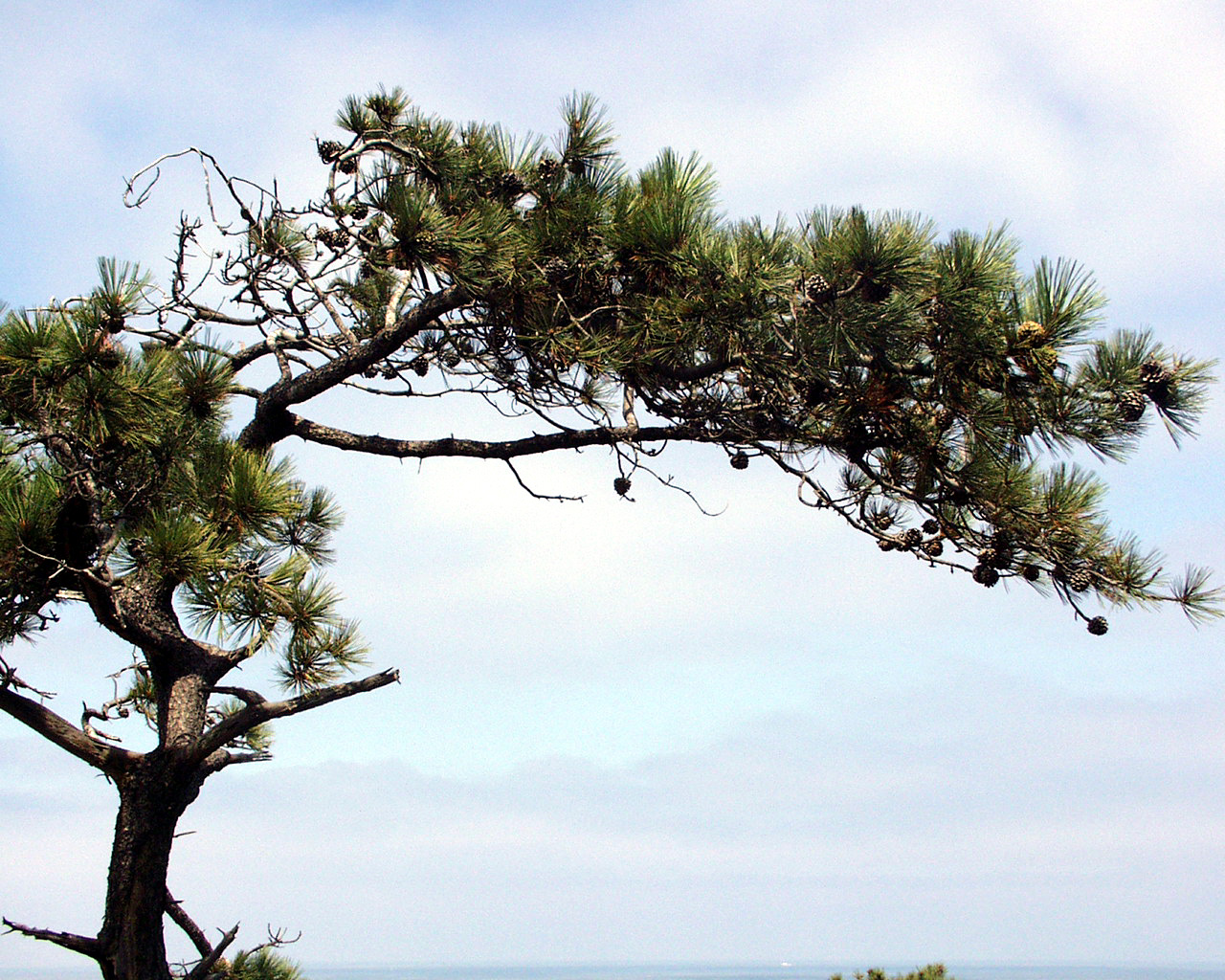 Parry,
who visited San Diego in 1850, the same year that California became a state,
recognized that the trees growing at a place Spanish explorers had named Punto
de Los Arboles (Point of the Trees), were a unique species of pine. He
named the species in honor of Torrey, his former professor, sending to him
some seeds. Torrey never traveled to California, so never got to see the tree
named in his honor. Today, the Parry Grove Trail is one of the popular
walks overlooking the Pacific Ocean at Torrey Pines State Beach..
Another is the Guy Fleming Trail, named for a naturalist who worked hard to
preserve the park. The longest trail is the Beach Trail leading over the
bluffs, past gullies and caves, to the beach below. From the Beach Trail one
may take detours to such colorful sounding venues as Red Butte, Razor Point,
Broken Hill Overlook and Yucca Point.
Parry,
who visited San Diego in 1850, the same year that California became a state,
recognized that the trees growing at a place Spanish explorers had named Punto
de Los Arboles (Point of the Trees), were a unique species of pine. He
named the species in honor of Torrey, his former professor, sending to him
some seeds. Torrey never traveled to California, so never got to see the tree
named in his honor. Today, the Parry Grove Trail is one of the popular
walks overlooking the Pacific Ocean at Torrey Pines State Beach..
Another is the Guy Fleming Trail, named for a naturalist who worked hard to
preserve the park. The longest trail is the Beach Trail leading over the
bluffs, past gullies and caves, to the beach below. From the Beach Trail one
may take detours to such colorful sounding venues as Red Butte, Razor Point,
Broken Hill Overlook and Yucca Point.
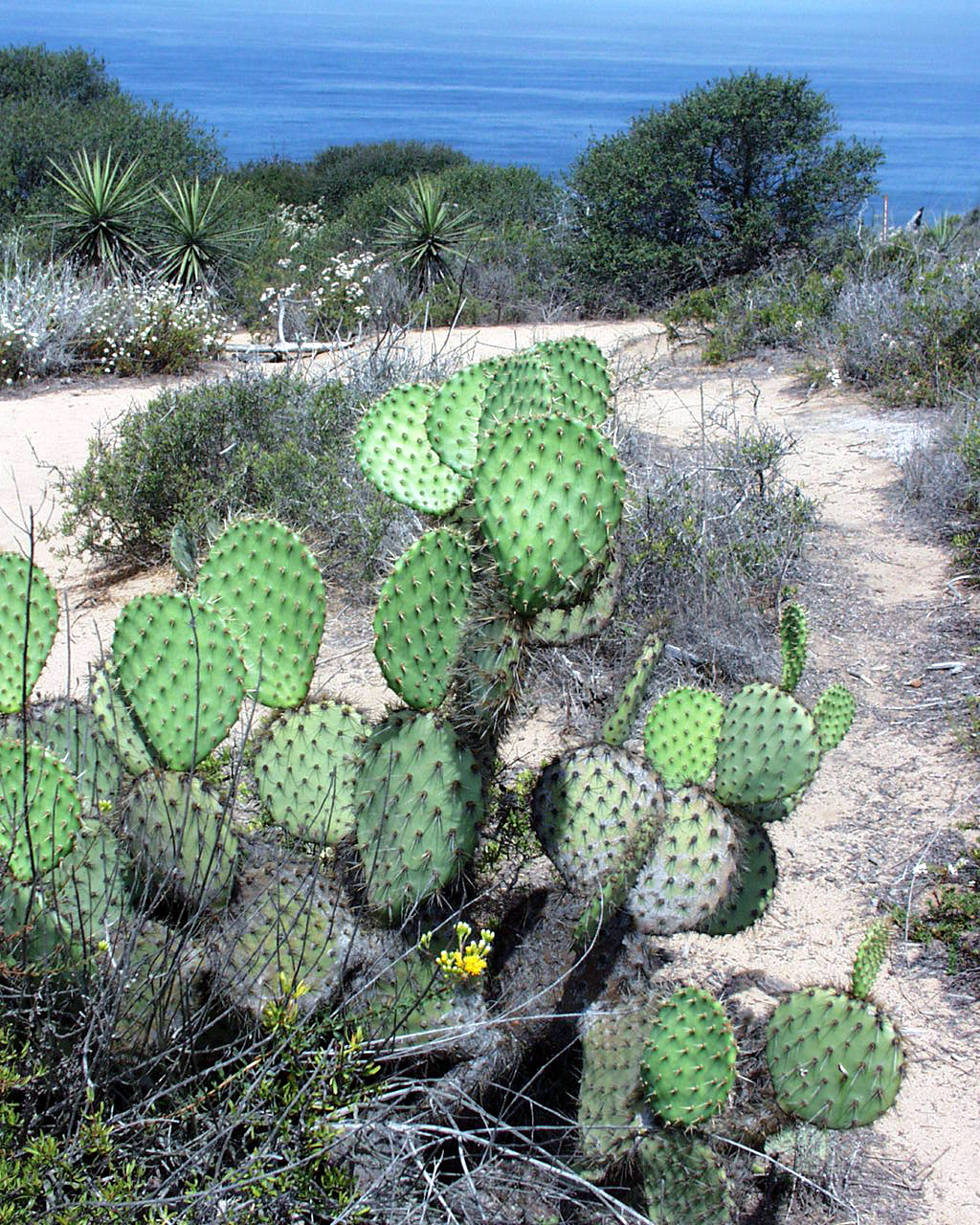 Along
with cousins Harry and Sherry Jacobson-Beyer of Louisville, Ky., I hiked along
the beach trail on Wednesday, July 5, finding it to be an easier hike than I
had imagined. Besides the namesake Torrey Pines, there were numerous plant
species to see, including several varieties of cactus, juxtaposed against
dramatic panoramas of the Pacific Ocean and deep gullies which suddenly
presented themselves as the fenced trail wended its way westward. We had
hoped to walk all the way down to the beach, but were advised that rain damage
had forced the closure of the portion of the trail that descended all
the way down to the sand. So we hiked to an overlook, then turned
around, and retraced our steps, finding in the ascent as much
fascinating scenery as we had encountered in the descent.
Along
with cousins Harry and Sherry Jacobson-Beyer of Louisville, Ky., I hiked along
the beach trail on Wednesday, July 5, finding it to be an easier hike than I
had imagined. Besides the namesake Torrey Pines, there were numerous plant
species to see, including several varieties of cactus, juxtaposed against
dramatic panoramas of the Pacific Ocean and deep gullies which suddenly
presented themselves as the fenced trail wended its way westward. We had
hoped to walk all the way down to the beach, but were advised that rain damage
had forced the closure of the portion of the trail that descended all
the way down to the sand. So we hiked to an overlook, then turned
around, and retraced our steps, finding in the ascent as much
fascinating scenery as we had encountered in the descent.
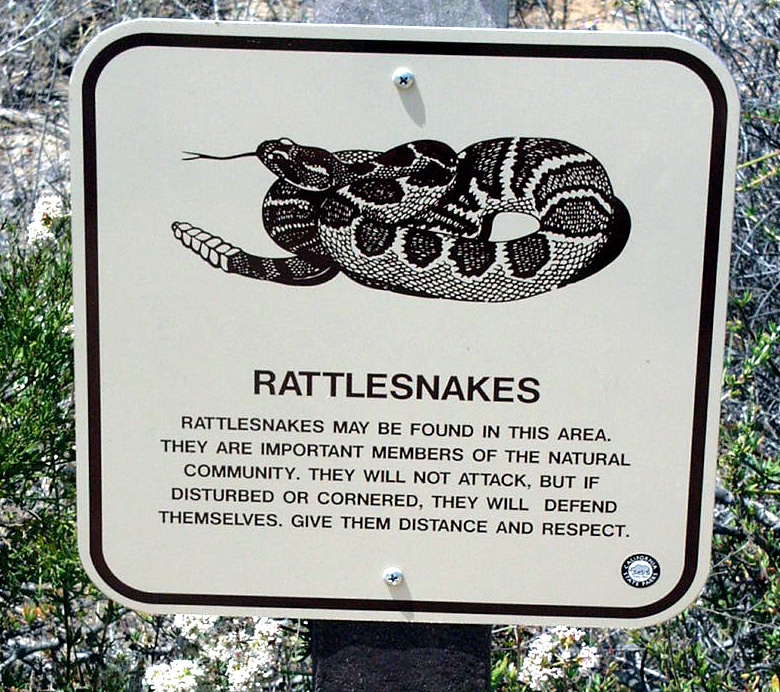 There
are signs along the trail system alerting hikers to the fact that rattlesnakes
may be encountered. At the visitors center, I had heard a docent telling
one woman who inquired that she need not fear the rattlers: "They are
much more afraid of you, and because you are too big to eat, they have no
interest in attacking you." He advised her that if she saw a
rattlesnake, she should simply give it time to slither off the path. I
am certain that the docent was correct; I've long believed that snakes have
been getting unjustifiably bad press ever since that little incident that the
Bible describes as having occurred in the Garden of Eden.
There
are signs along the trail system alerting hikers to the fact that rattlesnakes
may be encountered. At the visitors center, I had heard a docent telling
one woman who inquired that she need not fear the rattlers: "They are
much more afraid of you, and because you are too big to eat, they have no
interest in attacking you." He advised her that if she saw a
rattlesnake, she should simply give it time to slither off the path. I
am certain that the docent was correct; I've long believed that snakes have
been getting unjustifiably bad press ever since that little incident that the
Bible describes as having occurred in the Garden of Eden.
We saw a few birds and lizards but nothing particularly exotic from the animal
kingdom on our hike, but the rock formations more than made up for this, and
come to think of it, the rocks looked quite a lot like an animal.
"A camel," I said. "No, a sphinx," said
Sherry. "Okay, well, maybe a lion." See what I mean
about two Jews and three opinions? Harry kept uncharacteristically
silent during the brief debate. Here's the formationl see with whom you agree:
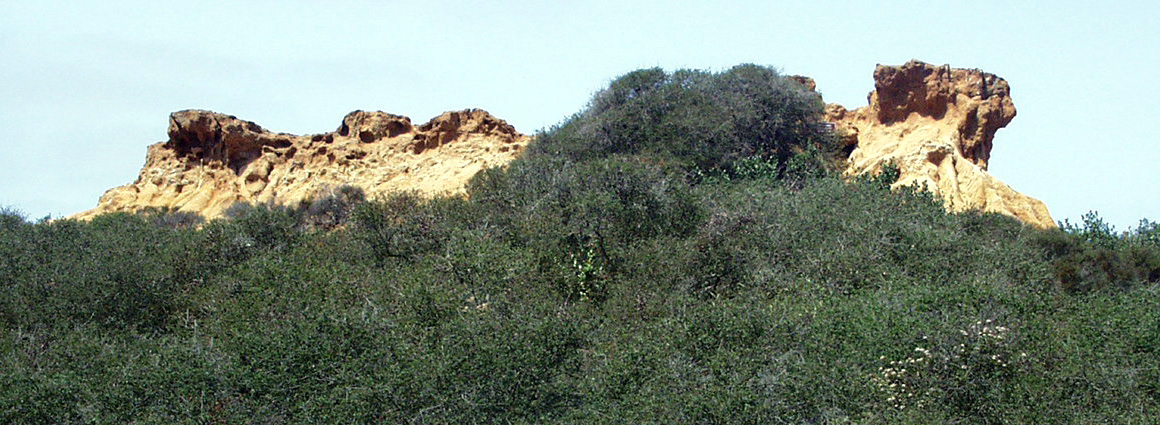
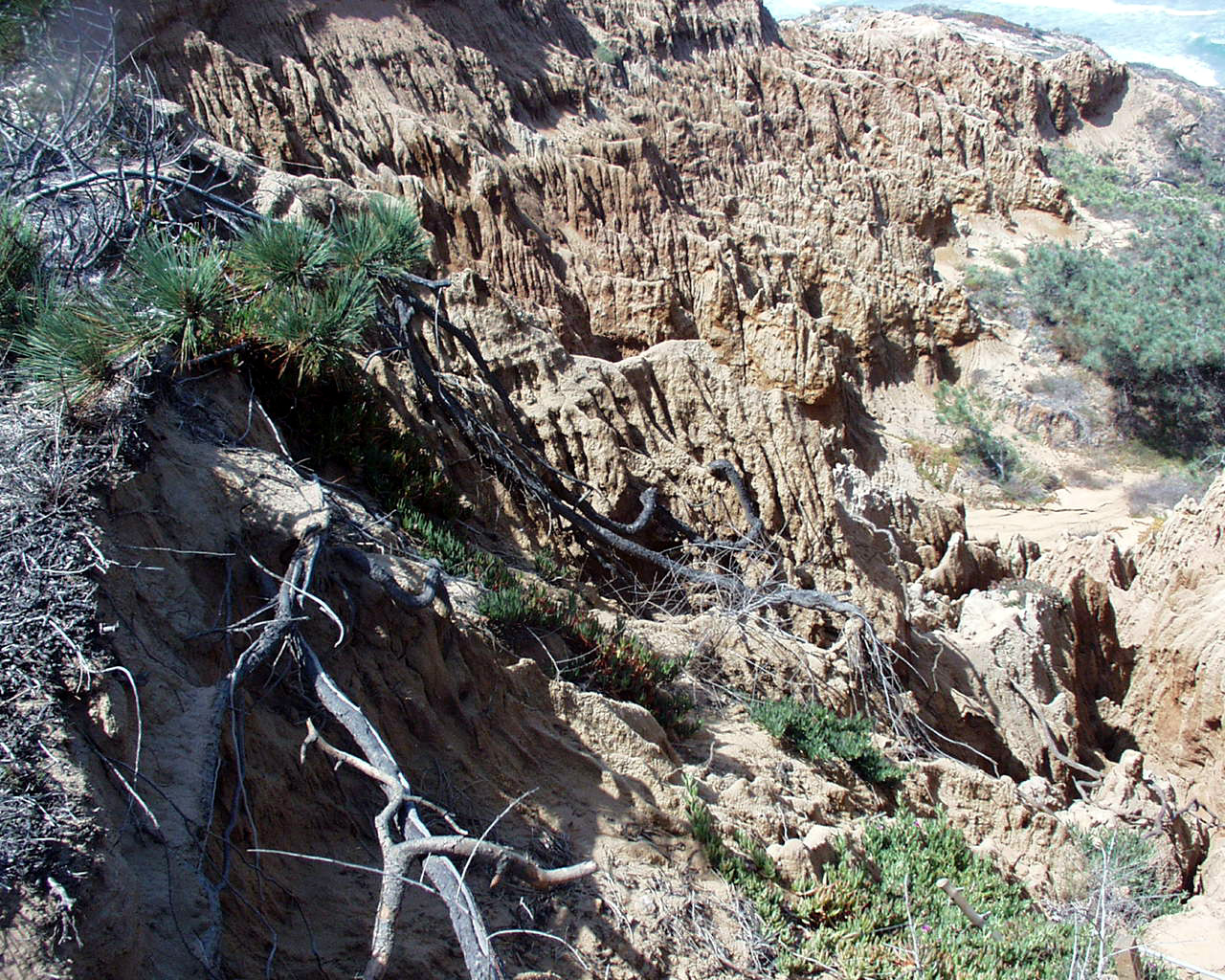 One
of the impressive sights along the walk was the root system of a Torrey Pine,
which had penetrated through the side of the sandstone where it had grown and
now was dangling over the deep gully below. I imagine that some time in
the future, as more of the bluff is eaten away by wind and rain erosion, the
tree will lose its footing and tumble down toward the beach far below.
One
of the impressive sights along the walk was the root system of a Torrey Pine,
which had penetrated through the side of the sandstone where it had grown and
now was dangling over the deep gully below. I imagine that some time in
the future, as more of the bluff is eaten away by wind and rain erosion, the
tree will lose its footing and tumble down toward the beach far below.
After returning to the visitors center, where our car was parked, we
drove down the hill to the beach parking lot. The $6-per-vehicle
admission to Torrey Pines State Reserve permits you to shuttle between the two
parking lots. We headed to the water that had been tantalizing us from
the the bluffs above. How good it was to soothe our feet after
trudging up a trail!
Because there is an admission charge to the Torrey Pines State Reserve, the
beach typically is less crowded than nearby beaches. It took us
naturalists no time at all to find a spot to observe frolicking humans.
